At Green Energy Consumers Alliance, we’re all about that “think globally, act locally” thing. So it hurts to report that our beloved states, Massachusetts and Rhode Island, have carbon emissions going up, not down as their laws and the planet require. Unfortunately, this is true at a global and national level as well. These sobering facts are a renewed call to action for all of us.
The World
Preliminary estimates are that worldwide greenhouse gas emissions (GHG) rose from 2021 to 2022, showing that reductions attributable to COVID-19 did not last. 2023 data is not yet available. Not surprisingly, the concentration of carbon dioxide in the atmosphere continues to rise.
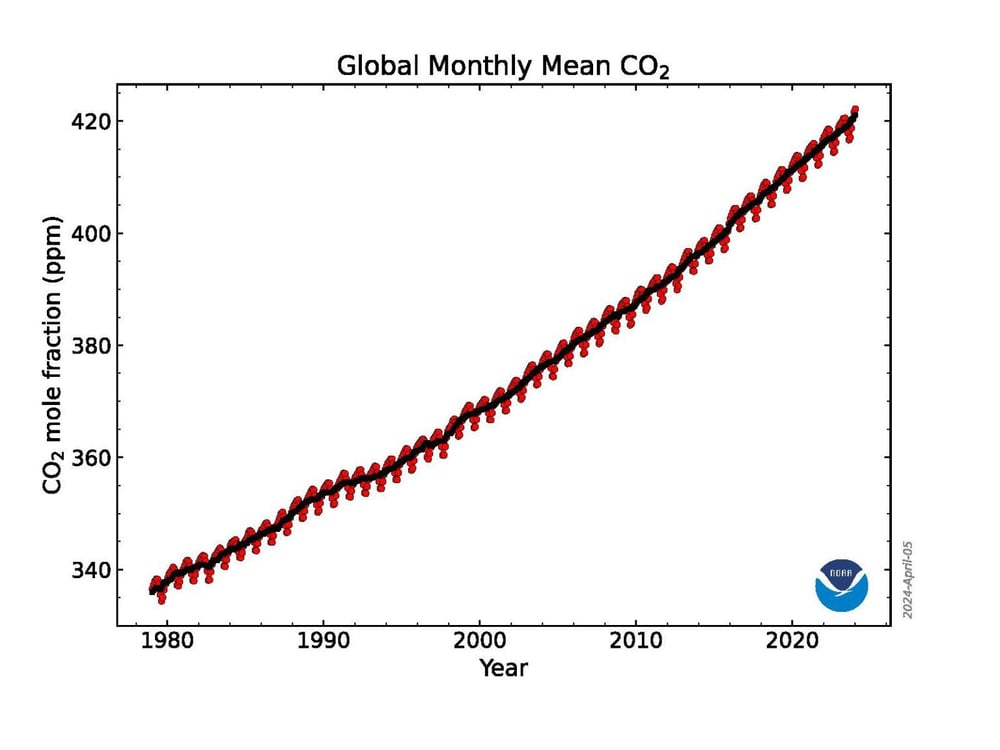
The Nation
Emissions in the US also grew from 2021 to 2022.
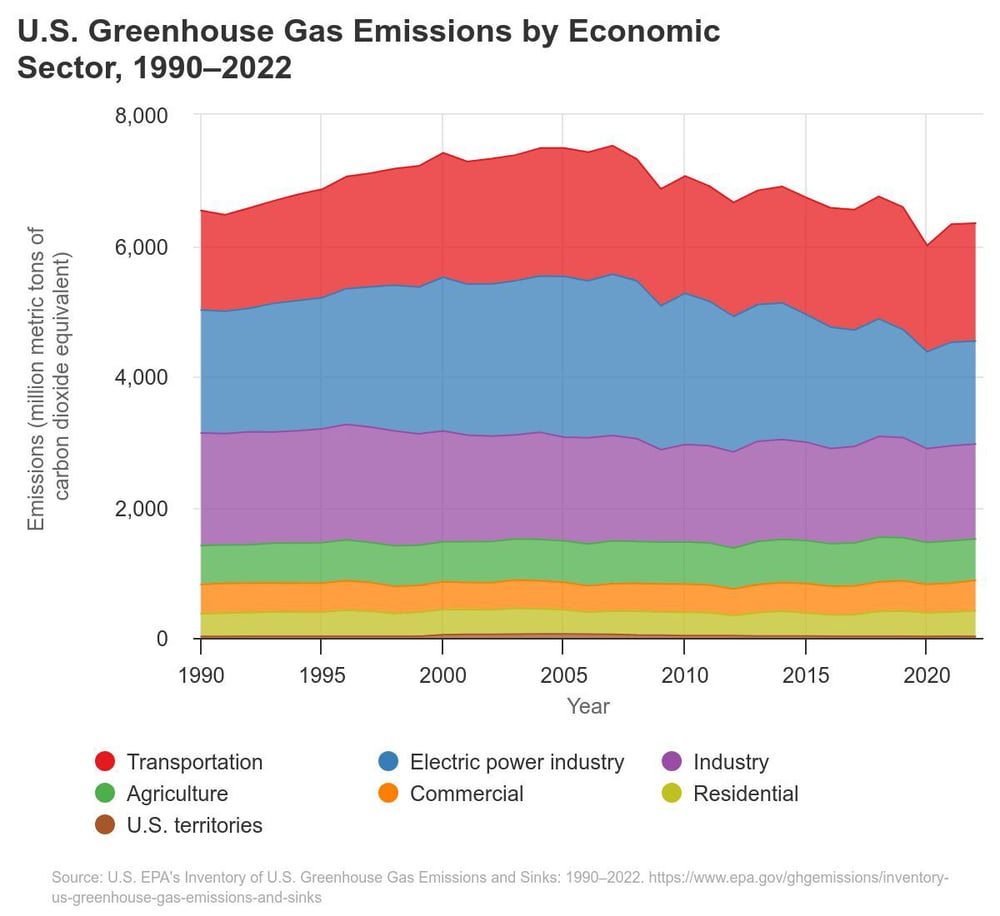
According to the Rhodium Group, preliminary data for 2023 shows that US emissions fell somewhat compared to 2022, driven mostly by progress in the electricity sector. We won’t know for certain until the Environmental Protection Agency publishes its report for 2023 in early 2025. This would be great news, but we must curb our enthusiasm, given that the reduction is expected to be less than needed to reach the nation’s GHG reduction goal for 2030.
Rhode Island
If you recall last year’s blog “Rhode Island’s 2020 GHG Reduction Target: A Low Bar to Clear + An Anomalous Year,” you won’t be surprised that Rhode Island’s GHG emissions rebounded from 2020 to 2021. Rhode Island’s Department of Environmental Management just released their 2021 inventory showing that emissions rose 8.9% between 2020 and 2021. Of course, 2020 was not a normal year; the combination of the COVID-19 lockdown significantly reducing travel, and warmer weather resulting in less heating demand, caused emissions to dip. As the economy came back online in 2021, emissions subsequently rebounded.
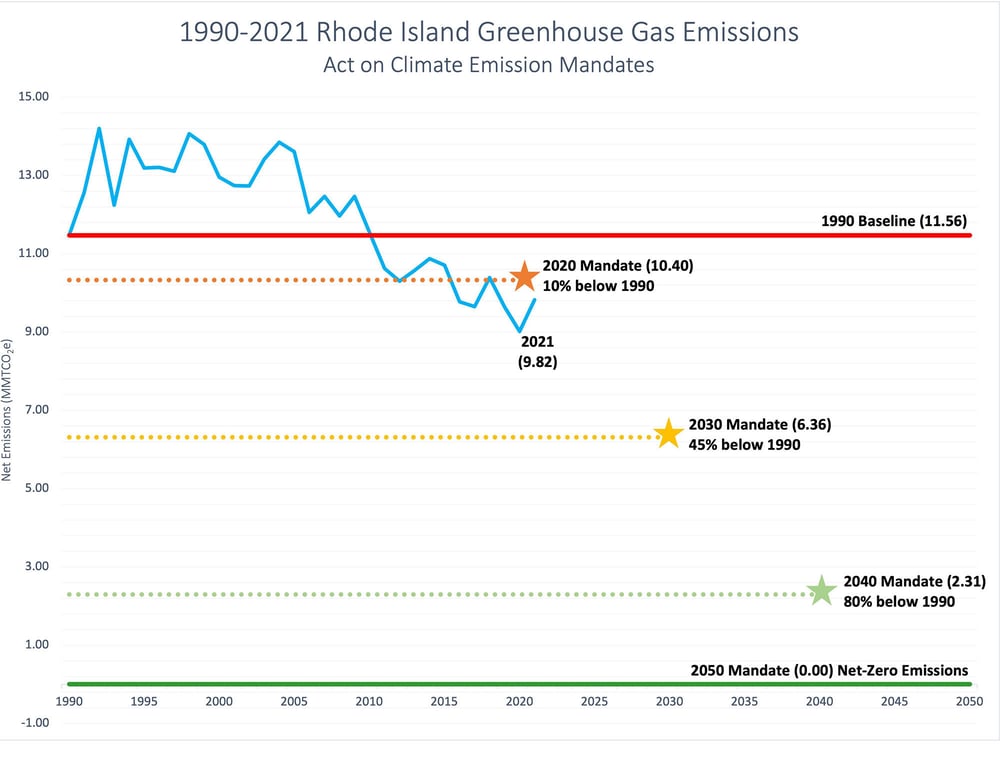
Specifically by sector, from 2020 to 2021, transportation emissions in the Ocean State increased by 5.4% as air, road, and rail travel largely resumed. Heating emissions increased by 11.3%, mainly due to New England experiencing a slightly colder and snowier winter compared to 2020. And, electricity sector emissions also increased by 12.5% but are expected to decrease as we bring more solar and offshore wind online. In 2021, transportation and residential heating remain the largest sources of GHG in Rhode Island.
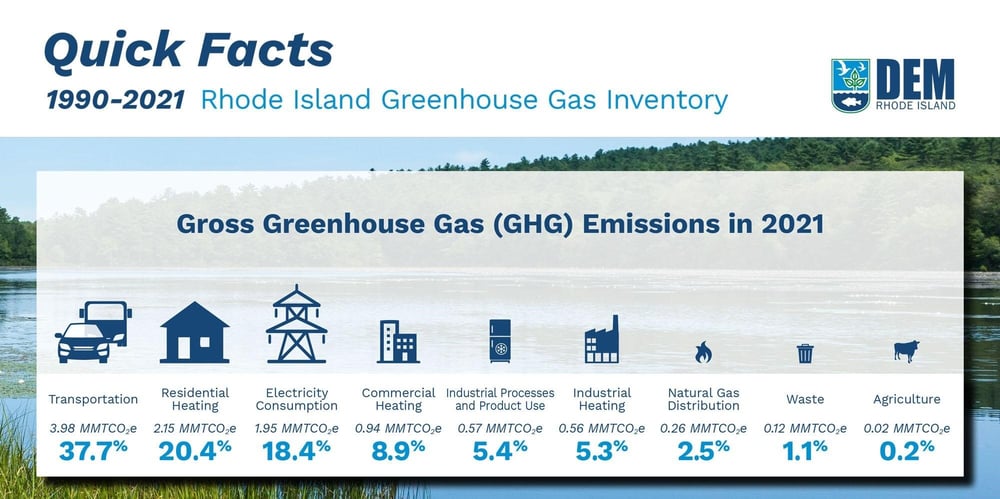
Despite the 2021 increase, overall emissions in RI have been reduced by 14.4% below 1990 levels, meaning the state still achieved the Act on Climate’s 2020 mandate of 10% below 1990 levels. However, considering the goal is 45% emission reductions by 2030 and net zero by 2050, a 10% by 2020 benchmark is far too low. The state now faces a considerable challenge to reduce the remaining 35% of emissions by 2030. For example, Massachusetts’ emissions reduction target by 2020 was 25% below 1990 levels, putting the state on a better trajectory towards net zero by 2050.
Massachusetts
On June 28, the Massachusetts Department of Environmental Protection reported new partial 2022 and 2023 data. The data demonstrates that emissions from the buildings and transportation sectors went up from 2021 to 2022. The overall totals for 2022 and 2023 are not yet available. We do find one bright spot: emissions from the electric sector went down in 2022 and again in 2023. Several years ago, the electricity sector was most responsible for GHG emissions. In Massachusetts and Rhode Island, electricity is now third behind transportation and buildings.
The graphs below for the transportation and buildings sector illustrate how emissions are going in the wrong direction in Massachusetts. (In the graphs below, CO2 refers to carbon dioxide and CO2e refers to a carbon dioxide equivalent; both are a measure of the GHG emitted. “MMT” refers to million metric tons, a measure of those pollutants. The “CECP limits” are the limits for each sector determined by the state’s Clean Energy & Climate Plan.)
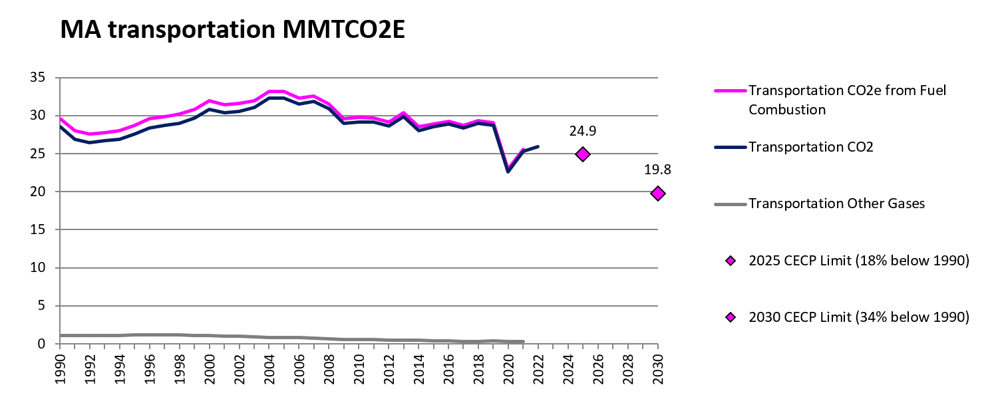
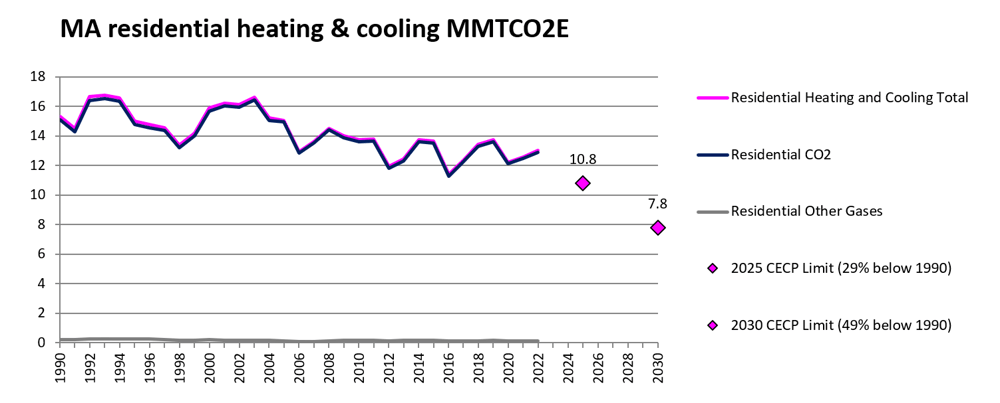
Emissions Reductions Must Be Steeper
It’s great news that electricity sector emissions are falling nationally and in Massachusetts. But it’s sobering to see that the two leading causes of emissions, transportation, and buildings, rose from 2020 to 2021 and probably 2021 to 2022.
Transportation emissions might begin to fall in the next several years as electric vehicles gradually displace gasoline-powered cars. Both states have adopted the Advanced Clean Cars II (ACC2) regulations which require carmakers to make zero-emission vehicles 68% of new car sales by 2030 and 100 percent by 2035. Whether ACC2 will have enough of an effect by 2030 to meet the states’ climate targets by that point remains to be seen. We would like to see additional state-level policies to ensure success – policies that encourage faster adoption of EVs, improve public transportation, make streets safer for walking and biking, and reduce vehicle miles traveled.
We are worried even more about building sector emissions. In neither Massachusetts nor Rhode Island do we see policies yet in place that would bend the emissions curve to the points legally required by 2030.
Recently the Massachusetts State Senate passed a wide-ranging climate bill that included some good provisions to rein in emissions from gas utilities. Any day now, we expect the House to come out with a climate bill of its own. For more information on the Senate legislation and how you can contact your state representative, read this blog.
Rhode Island’s legislative session ended with a whimper, not a bang, as we described in this blog. Instead of passing a much-needed “building performance standard,” the legislature called for a study. We will be watching that closely.
Stay Tuned
As both Rhode Island and Massachusetts plan to meet their climate mandates, we must continue to advocate for large-scale programs to decarbonize buildings, or else we don’t see how either state will get there. The programs can be fashioned through legislation or by actions of the executive branch. For example, we expect that the Mass. Department of Environmental Protection will announce plans to implement a Clean Heat Standard this summer, which we have written about several times. Stay tuned for opportunities to engage and provide public comment.






Comments